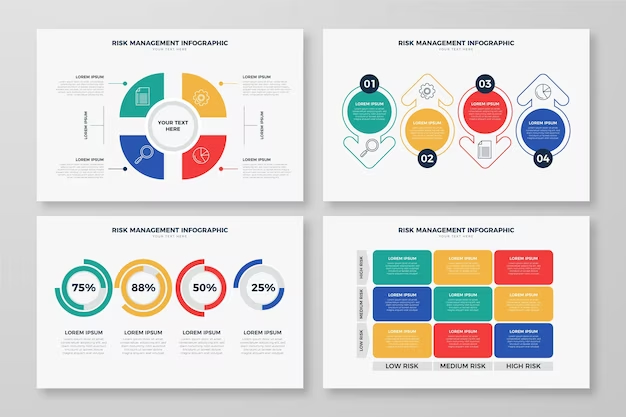If you want to learn how to create and execute a successful business strategy, you need to keep up with the latest trends and insights in the field. One of the best ways to do that is to follow some of the best business strategy blogs on the web.
These blogs offer valuable content and advice from experts and practitioners who have proven experience and knowledge in business strategy. Furthermore, they can help you improve your skills, expand your knowledge, and inspire your ideas. To help you, we have compiled a list of the top 10 business strategy blogs that you should follow.
These blogs cover various topics and aspects of business strategy. Such as business models, strategic planning, innovation, growth, marketing, and more. Here are the top 10 business strategy blogs that you should bookmark and read regularly.

1. Strategy + Business
Strategy + Business is a blog that provides thought leadership and practical insights on business strategy and management. PwC publishes it. It is one of the leading global consulting firms. Moreover, it features articles, podcasts, videos, and newsletters from PwC experts and external contributors.
The blog covers a wide range of topics, such as leadership, culture, digital transformation, sustainability, and more. You can also find industry-specific and regional insights, as well as case studies and best practices from successful companies.
It is a great resource for anyone who wants to learn from the best and stay ahead of the curve.
2. Harvard Business Review
Harvard Business Review is a blog that offers cutting-edge research and ideas on business strategy and management. The Harvard official publishes it. It features articles, podcasts, videos, and newsletters from Harvard faculty and other leading experts and practitioners.
The blog covers a variety of topics, such as innovation, entrepreneurship, leadership, marketing, operations, and more. You can also find industry-specific and regional insights, as well as tools and frameworks to apply to your own business. Harvard Business Review is a must-read for anyone who wants to learn from the best and keep up with the latest trends and insights in business strategy.
3. McKinsey Insights
McKinsey Insights is a blog that offers practical and actionable insights on business strategy and management.
The blog covers a broad range of topics, such as strategy, innovation, growth, digital, operations, and more.
You can also find industry-specific and regional insights, as well as case studies and best practices from successful companies. McKinsey Insights is a valuable resource for anyone who wants to learn from the best and improve their business performance and results.
4. MIT Sloan Management Review
MIT Sloan Management Review is a blog that offers evidence-based and innovative insights on business strategy and management. It is published by MIT Sloan School of Management, one of the leading business schools in the world, and features articles, podcasts, videos, and newsletters from MIT faculty and other leading experts and practitioners.
The blog covers a diverse range of topics, such as strategy, innovation, leadership, analytics, culture, and more. You can also find industry-specific and regional insights, as well as tools and frameworks to apply to your own business.
Moreover, MIT Sloan Management Review is a trusted source for anyone who wants to learn from the best and stay on top of the latest developments and challenges in business strategy.
5. Forbes Strategy
Forbes Strategy is a blog that offers expert and insightful opinions on business strategy and management. It is published by Forbes, one of the leading business media platforms in the world, and features articles, podcasts, videos, and newsletters from Forbes contributors and other leading experts and practitioners.
The blog covers a wide range of topics, such as strategy, innovation, leadership, marketing, finance, and more. You can also find industry-specific and regional insights, as well as case studies and best practices from successful companies. Additionally, Forbes Strategy is a useful resource for anyone who wants to learn from the best and get different perspectives and opinions on business strategy.
6. Strategyzer
Strategyzer is a blog that offers practical and hands-on guidance on business strategy and innovation. It is published by Strategyzer, a company that provides online tools and training for business model and value proposition design.
The blog features articles, podcasts, videos, and newsletters from Strategyzer co-founders Alex Osterwalder and Yves Pigneur, as well as other leading experts and practitioners. The blog covers topics such as business model innovation, value proposition design, lean startup, customer development, and more. You can also find tools and templates, such as the Business Model Canvas and the Value Proposition Canvas, to help you create and test your business strategy and innovation.
Strategyzer is a great resource for anyone who wants to learn how to create and execute a successful business strategy and innovation.
7. HBR IdeaCast
HBR IdeaCast is a podcast that offers insightful and inspiring conversations on business strategy and management. It is produced by Harvard Business Review and features interviews with Harvard faculty and other leading experts and practitioners. The podcast covers topics such as strategy, innovation, leadership, culture, marketing, and more. You can also find industry-specific and regional insights, as well as case studies and best practices from successful companies.
HBR IdeaCast is a great resource for anyone who wants to learn from the best and get inspired by their stories and insights on business strategy.
8. Bain Insights
Bain Insights is a blog that offers strategic and practical insights on business strategy and management. It is published by Bain & Company, one of the leading global consulting firms, and features articles, podcasts, videos, and newsletters from Bain consultants and external contributors.
The blog covers a wide range of topics, such as strategy, innovation, growth, digital, operations, and more. You can also find industry-specific and regional insights, as well as case studies and best practices from successful companies.
Bain Insights is a valuable resource for anyone who wants to learn from the best and improve their business performance and results.
9. Strategyzer Blog
Strategyzer Blog is a blog that offers practical and hands-on guidance on business strategy and innovation. It is published by Strategyzer, a company that provides online tools and training for business model and value proposition design.
The blog features articles, podcasts, videos, and newsletters from Strategyzer co-founders Alex Osterwalder and Yves Pigneur, as well as other leading experts and practitioners. The blog covers topics such as business model innovation, value proposition design, lean startup, customer development, and more.
You can also find tools and templates, such as the Business Model Canvas and the Value Proposition Canvas, to help you create and test your business strategy and innovation. Strategyzer Blog is a great resource for anyone who wants to learn how to create and execute a successful business strategy and innovation.
10. The Strategy Bridge
The Strategy Bridge is a blog that offers a thoughtful and provocative analysis of business strategy and management. It is published by The Strategy Bridge, a non-profit organization that fosters the study and practice of strategy.
The blog features articles, podcasts, videos, and newsletters from The Strategy Bridge staff and other leading experts and practitioners. The blog covers topics such as strategy, innovation, leadership, culture, ethics, and more.
You can also find industry-specific and regional insights, as well as case studies and best practices from successful companies. The Strategy Bridge is a useful resource for anyone who wants to learn from the best and challenge their assumptions and beliefs on business strategy.
Closing Thoughts
Business strategy is a vital skill for any business leader or entrepreneur who wants to grow and succeed in their business. To learn and improve your business strategy skills, you need to keep up with the latest trends and insights in the field.
One of the best ways to do that is to follow some of the best business strategy blogs on the web. These blogs offer valuable content and advice from experts and practitioners who have proven experience and knowledge in business strategy. They can help you improve your skills, expand your knowledge, and inspire your ideas.
Looking to enhance your online presence and captivate your audience with a stunning website? Our expert web design services are tailored to your unique needs. Contact us today to elevate your brand and leave a lasting impression on the digital landscape. Your success is just a click away!












